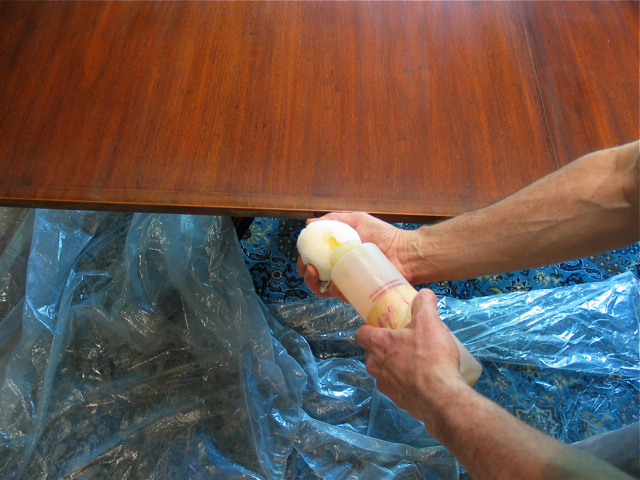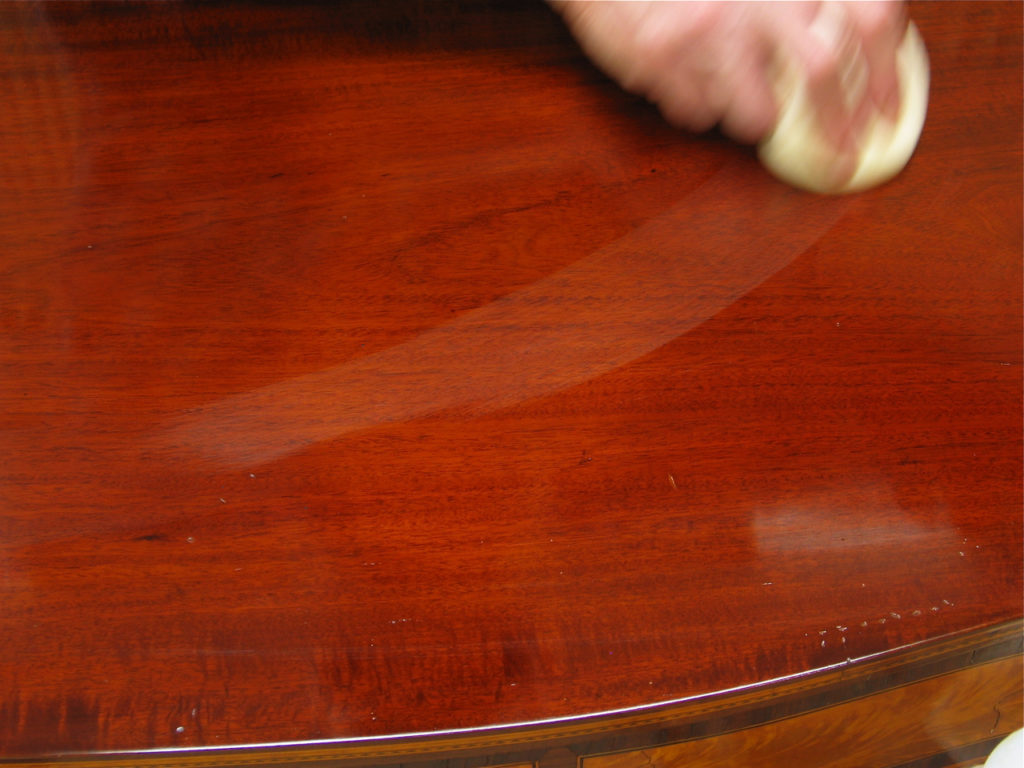We may receive a commission when you use our affiliate links. However, this does not impact our recommendations.

To add shellac to a pad, I use two spout containers, one with two-pound cut shellac, the other with alcohol. With this system it’s easy to control and vary the mix.
One of the difficulties with learning to do French polishing is overcoming the exotic vocabulary that continues to be used by some: “charge the rubber,” “fad in,” “spirit off,” etc. This vocabulary was created by English craftsmen 200 years ago, brought to the United States, and it has continued to be used in instructions since. I just came across these terms again, which inspired this post.
I’ve always thought it pretentious to use this vocabulary when there are perfectly good words everyone understands that can be substituted. Here’s the translation.
“Rubber” was the name given to what we commonly call a pad, made by tightly wrapping a smooth, finely woven outer cloth such as a handkerchief around a wad of cotton or wool cloth. The word rubber referred to the rubbing you do in French polishing.
“Charging” the rubber means simply adding shellac to it.
“Fadding in” refers to building up the finish as you rub more shellac onto the surface. So “building up” works quite well.
“Spiriting off” refers to using alcohol to remove the surface oil that was added in the building-up stage to make the pad glide more smoothly over the surface. A very small amount of denatured alcohol is added to a freshly made pad and rubbed over the surface. This is a critical step that is difficult to pull off because the alcohol can so easily streak the shellac you have applied in the building-up stage.

The oil (I use mineral oil) also provides visual evidence that you have properly loaded the pad, and tells you when to reload as the comet’s tail caused by the alcohol evaporating through the oil shrinks to only an inch or two long.
It’s much easier to remove the oil with a product such as naphtha instead. Naphtha thoroughly removes the oil with a single wipe, doesn’t damage the shellac at all and evaporates within a minute or so. (They didn’t have naphtha 200 years ago.)
The problem with naphtha is that it makes the finish look drier than the alcohol wipe. But you can easily and safely overcome this by applying a furniture polish or paste wax.
An additional term that is still often used is “linen.” You are instructed to use linen for the outer cloth. Two hundred years ago linen was the common fine cloth. Today we have finely woven cotton cloth, and linen can be hard to find. Both work well.
– Bob Flexner
Here are some supplies and tools we find essential in our everyday work around the shop. We may receive a commission from sales referred by our links; however, we have carefully selected these products for their usefulness and quality.








